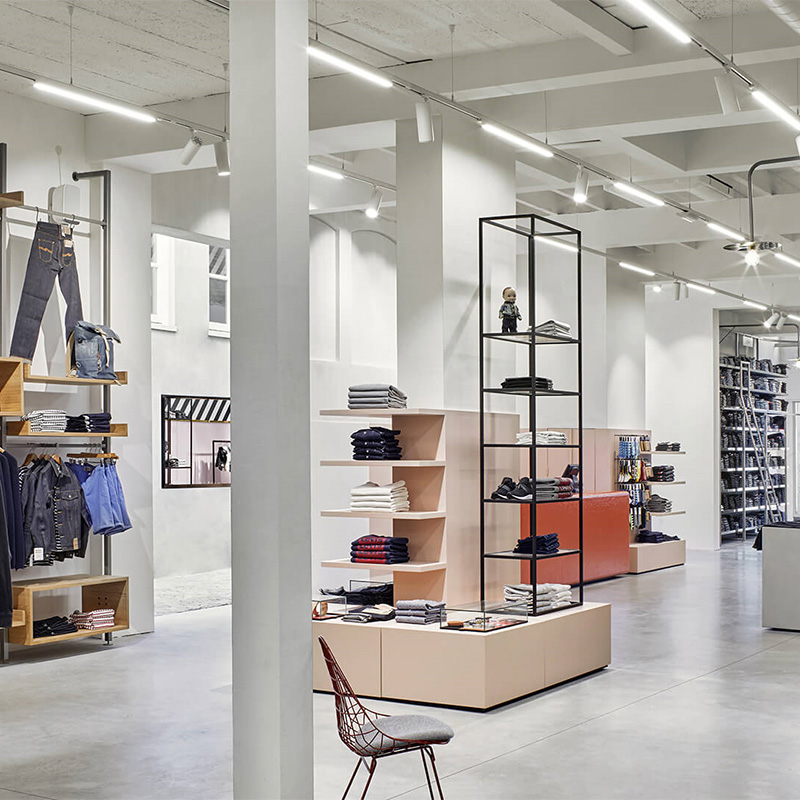Office Lighting
- Aug-30-2023
- 900 visits


Office lighting refers to the lighting used in workspaces and office environments to provide adequate illumination for tasks, enhance productivity, and create a comfortable and visually appealing work environment.
How to choose suitable office lighting products ?Below are several factors should be considered:
1. Lighting Levels: Adequate lighting levels are essential to support productivity and reduce eye strain. The lighting should be evenly distributed throughout the office space to avoid glare or shadows. Consider the specific tasks performed in each area and ensure appropriate lighting levels for reading, computer work, meetings, and common areas.
2. Color Rendering: Good color rendering is important in office lighting as it affects the visibility and perception of objects, documents, and people. Look for lighting fixtures with a high Color Rendering Index (CRI), ideally above 80, to ensure accurate color representation.
3. Lighting Temperature: The lighting temperature, measured in Kelvin (K), influences the mood and ambiance in the office. Warmer temperatures (around 3000K to 4000K) create a cozy and relaxed atmosphere, while cooler temperatures (5000K to 6500K) provide a brighter and more energizing environment. Consider the desired mood and tasks performed in each area when selecting the lighting temperature.
4. Energy Efficiency: Opt for energy-efficient lighting options, such as LED (Light Emitting Diode) fixtures, which consume less energy and have a longer lifespan compared to traditional lighting technologies. LED lighting also offers flexibility in color temperature, dimming capabilities, and directional control, allowing for personalized lighting designs while reducing energy consumption.
5. Glare Reduction: Office lighting should minimize glare to ensure visual comfort and prevent eye strain. Consider fixtures with glare-reducing features, such as diffusers or indirect lighting options, to provide a soft and uniform illumination without harsh shadows or direct glare.
6. Task Lighting: Incorporate task lighting options, such as desk lamps or under-cabinet lighting, to provide focused illumination for specific work tasks that require extra lighting. Task lighting offers flexibility for individual preferences and can help reduce overall lighting levels in the office while maintaining sufficient localized illumination.
7. Lighting Controls: Implement lighting controls, such as dimmers or occupancy sensors, to optimize energy usage and allow employees to personalize their lighting levels based on their preferences and specific tasks. Lighting controls also enable energy-saving measures during non-working hours or in unoccupied areas.
8. Maintenance and Durability: Choose lighting fixtures that are durable, easy to maintain, and have long lifespans. This reduces maintenance costs and ensures minimal disruption to the work environment. Look for fixtures with accessible components and replaceable light sources to simplify maintenance and extend the lifespan of the lighting system.
9. Acoustic Considerations: In open office environments, consider lighting fixtures that incorporate acoustic properties. These fixtures help absorb sound and reduce noise levels, creating a more comfortable and productive working environment.
10. Design and Aesthetics: Office lighting should complement the overall office design and aesthetics. Consider fixtures that integrate seamlessly with the interior design, providing a visually pleasing and cohesive look.
11. It's advisable to consult with lighting professionals or designers who specialize in office lighting to assess the specific requirements of your office space. They can provide expert guidance on lighting design, layout, and product selection to create an effective and comfortable lighting environment that promotes productivity and well-being.








